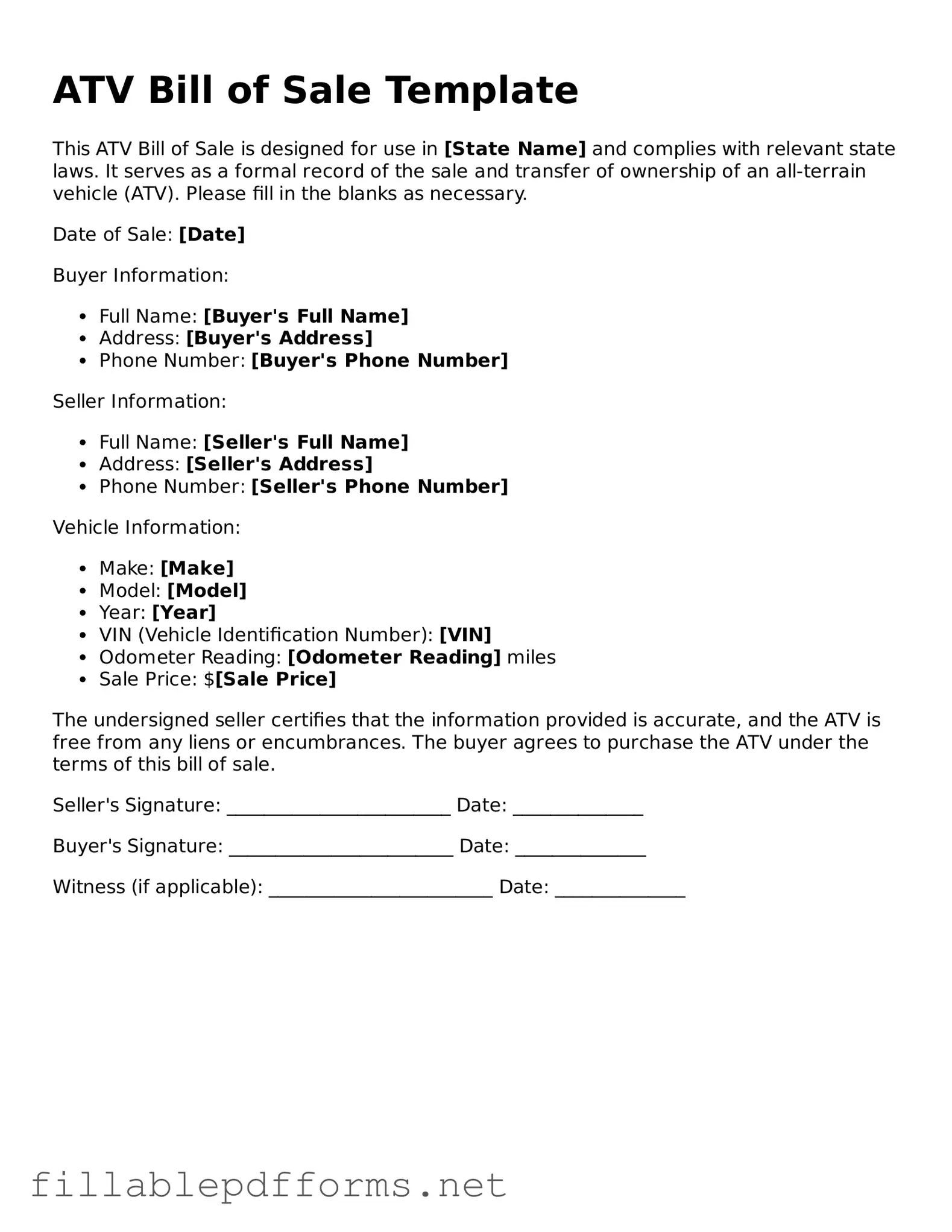Blank ATV Bill of Sale Template
An ATV Bill of Sale form is a legal document that serves as proof of the transfer of ownership of an all-terrain vehicle (ATV) from one party to another. This form outlines important details such as the names of the buyer and seller, the vehicle's identification number, and the sale price. Having a properly completed bill of sale can protect both parties in the transaction and provide clarity regarding the ownership change.
Launch Editor Here
